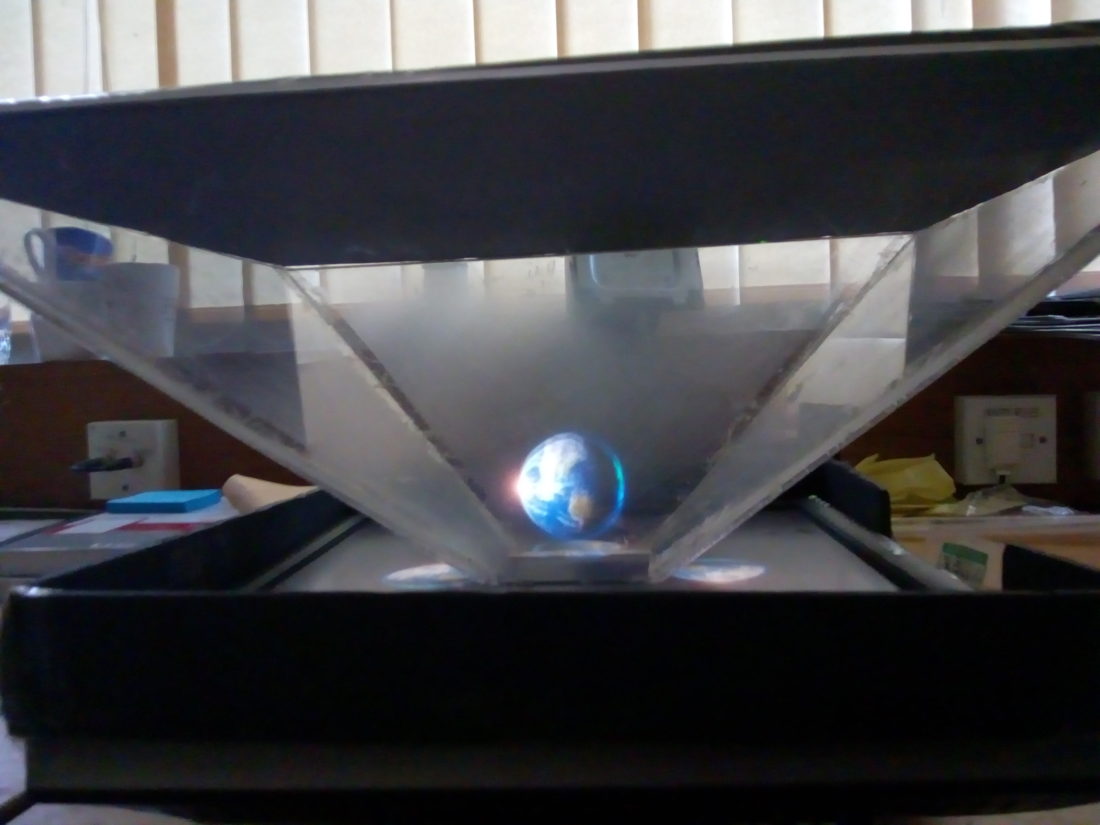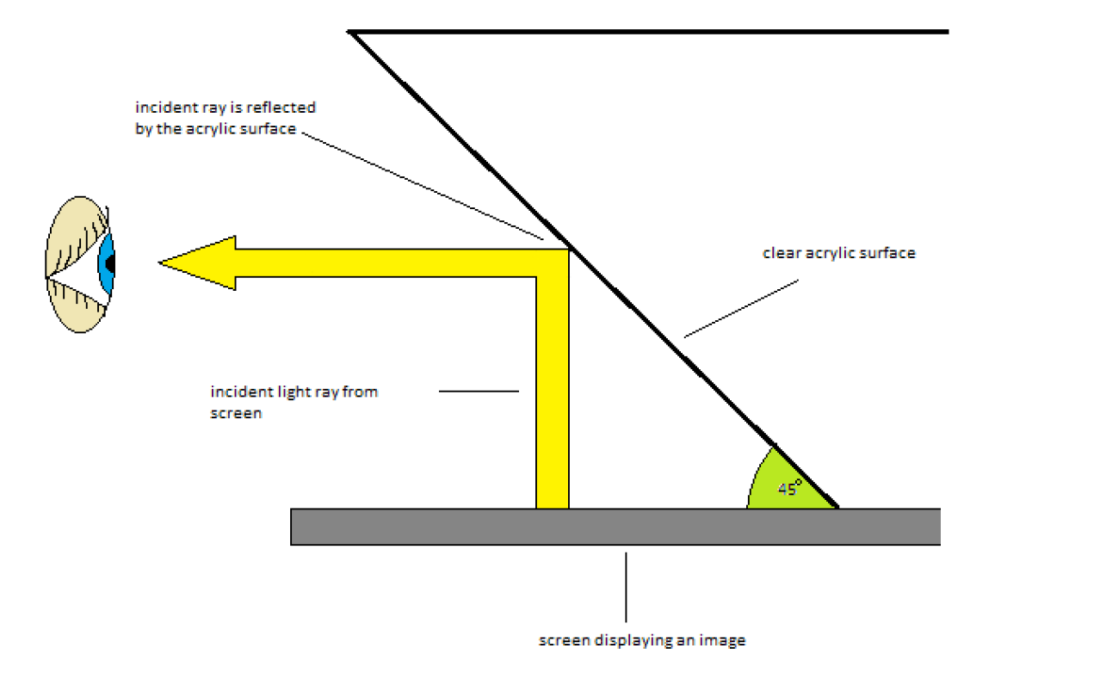For anyone who has seen Star Trek TNG, DS9 or Voyager, the holodeck is hands-down one of the coolest inventions in the Star Trek universe. For those of you that don’t know what I am talking about the holodeck is a room which can create 3D virtual reality environments the user can walk around and interact with, without the need to wear VR glasses or any other equipment.
Unfortunately in 2018 we have not yet made the technological advancements to create a holodeck. Therefore (to paraphrase a famous saying:) if the technology does not exist for me to go to the holodeck, I must make the holodeck come to me.
And make I did!

Yep that is a 3D holographic Earth you are seeing. Well, kind of. Unlike the fictional holograms of star trek, this hologram isn’t actually 3D and you cannot interact with it. It is created by placing a perspex pyramid onto a screen which displaying a specially formatted 2D image of the Earth. The 2D image is then reflected off the perspex which tricks your brain into thinking the Earth is 3D and actually in the centre of the perspex pyramid like so:

But (awesome as this is) what relevance does it have to the StarFomMapper project? Well, frankly, star clusters are massive, 3D and their stars are continuously spatially evolving – it is incredible difficult to visualise in your head alone! (Don’t believe me? Give it a try…go on, I’ll wait.)
So this ‘poor mans’ holodeck will allow us to see (literally) how a cluster will evolve in 3D 😀 and once it is out of the prototype stage we will be taking this technology into schools in West Yorkshire to show them too, and are creating an App so that anyone watch a 3D star cluster evolve from the comfort of their phone! Until then, why not check out the 2D visualisation of a forming star cluster here on the website?
